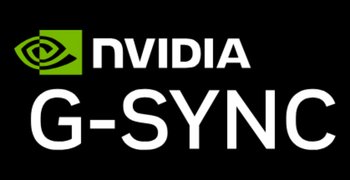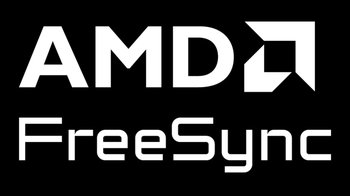If you’ve been looking for a new gaming monitor, you have no doubt noticed that compatibility with NVIDIA G-Sync, or AMD FreeSync, or sometimes both, is usually made very apparent.
Why is that? Are G-Sync and FreeSync really that important? Well, yes, they certainly can be. So today we’re going to compare NVIDIA G-Sync and AMD FreeSync to see what each one does.


To get it out of the way early, these two technologies were primarily developed to fix the same thing: the ever-maddening issue of screen tearing.
Screen tearing, for those who don’t know, is a particularly irritating issue that can happen when the refresh rate of your monitor is not synchronized with the frame rate of the game you’re playing. This can manifest with weird visual oddities like the top half of your screen showing a very slightly different image from the bottom half.
This was the issue that NVIDIA G-Sync and AMD FreeSync were created to fix. Monitors that use either G-Sync or FreeSync dynamically change their refresh rate in real-time to match the frame rate of the content that’s being displayed. This eliminates screen tearing. OK, problem solved then. If both GPU companies have a solution for the problem, then it won’t matter which one you use, right?
Well, at the most basic level, you’d be correct, however, there are some slight differences that are worth being aware of, hence the existence of this article. Let’s take a look.
G-Sync monitors are generally more expensive than their FreeSync counterparts. This is because a G-Sync monitor requires a specific hardware module from NVIDIA to be installed in the monitor.
FreeSync, by comparison, does not incur any additional hardware costs as it works natively over DisplayPort 1.2 and newer. This means that your GPU needs to have a DP 1.2 or newer output, and you need to use a DP 1.2 or newer cable.

The XENEON 27QHD240 OLED is G-Sync compatible as well as FreeSync Premium
Of course, even though the aforementioned G-Sync module does add some cost, it means that G-Sync monitors will eliminate screen tearing even when used with much older GPUs.
FreeSync, however, is only compatible with AMD GPUs from the RX 200 series onwards. While it’s relatively unlikely that you’re using a GPU older than this, it’s still something to be aware of.
Yet another confusing development in the world of PC gaming: no, G-Sync is not the same as G-Sync Compatible. Put simply, a monitor marked “G-Sync Compatible” will still eliminate screen tearing, but without the advantages of the dedicated hardware module found in “G-Sync” monitors. The main drawback here is a smaller variable frame rate range than monitors with the actual hardware module. You can find out more about G-Sync, G-Sync compatible, and G-Sync ULTIMATE on NVIDIA’s website.
No. They are entirely different technologies. Though they both aim to achieve the same goal of eliminating screen tearing, G-Sync and FreeSync are far superior solution because they do not introduce any input lag, unlike V-Sync.
V-Sync forces the GPU to wait for the monitor to finish displaying the current frame before sending the next one, which slows down the whole process. In contrast, G-Sync and FreeSync drive the refresh rate of the monitor in real time in response to the GPU.
At time of writing, there are three “Tiers” of FreeSync. All of which stop screen tearing, but the Premium and Premium Pro levels have some additional advantages that you can read about on AMD’s website.
Well, you can’t really choose, as it depends on your GPU and Monitor combination. However, for most people, either one will be fine, as the specific advantages and drawbacks of each one are not going to be dealbreakers one way or the other for the majority of users.
So, if you're putting together a gaming PC build and you're factoring this into your decision between an AMD or an NVIDIA graphics card, know that the value and performance of the GPU is far more important than whether it works with FreeSync or G-Sync.
PRODUCTS IN ARTICLE